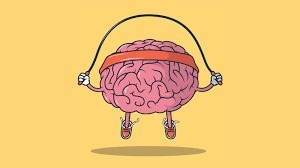Student Contributor: N.Nunez
 Brain breaks are a very useful and help tool to use managing a classroom. Student of all ages are not made to sit in a classroom all day without a break. Allowing and offering brain breaks to students will benefit their education positively.
Brain breaks are a very useful and help tool to use managing a classroom. Student of all ages are not made to sit in a classroom all day without a break. Allowing and offering brain breaks to students will benefit their education positively.
Brain breaks are very easy to implicate into a classroom and beneficial. Brain breaks do not require a massive amount of work to implicate into instruction, rather they are simple and relaxing for everyone in the classroom. Brain breaks are meant to relieve frustration that can be caused during lengthy amount of academic work. The goal of these brain breaks is for them to shift their focus, usually that means some type of movement. There are many examples of brain breaks, some include yoga, stretching, dancing and many more. Brain breaks can be included into instruction in different times. Some students need brain break after a lengthy amount of academic work or others will need it when becoming frustrated with a task. There are two main ways to implement breaks into a classroom schedule, either interval breaks or ratio breaks. Interval breaks are beneficial for younger kids, students will work for a set amount of time and then take a shorter break. Ratio breaks tend to suit older students. Ratio breaks are breaks to implicate in between a transition of subjects to refresh and relieve students’ minds. All in all, breaks are meant to be implicated to when frustration level for students is at a rise.
 This tool would be filed under the supportive phase. Brain breaks will be used during the students learning. They are meant to support students by reducing stress, anxiety and frustration and help them be more productive. They also help kids learn to self-regulate. Students who can return to a task and complete it with low frustration help them build self-confidence and esteem. This tool files into all the supportive phase qualities. The theory of influence this tool signifies is collaborative. This tool is collaborative because the needs of the class are placed above the needs of an individual. The teacher of this classroom has authority to override a brain break and implement any brain break when he/she sees fit.
This tool would be filed under the supportive phase. Brain breaks will be used during the students learning. They are meant to support students by reducing stress, anxiety and frustration and help them be more productive. They also help kids learn to self-regulate. Students who can return to a task and complete it with low frustration help them build self-confidence and esteem. This tool files into all the supportive phase qualities. The theory of influence this tool signifies is collaborative. This tool is collaborative because the needs of the class are placed above the needs of an individual. The teacher of this classroom has authority to override a brain break and implement any brain break when he/she sees fit.
More Information –
Tool Source: Shadowing classrooms.
https://www.unicefkidpower.org/brain-breaks-for-kids/

